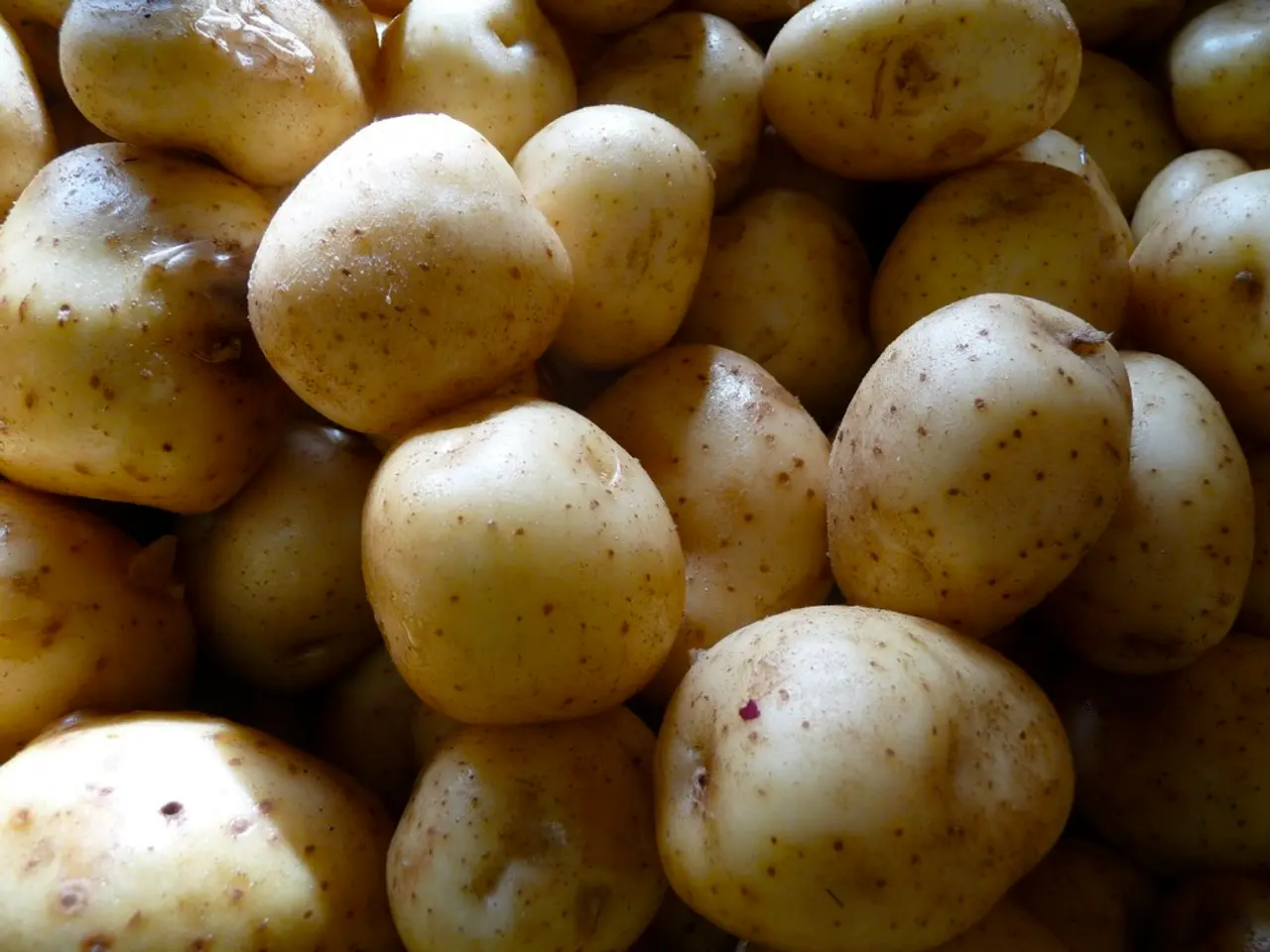Sweet Potato Cultivation: Comprehensive Guide on Nurturing and Growth
In the world of gardening, sweet potatoes are a delightful and nutritious addition to any plot. This guide offers a comprehensive overview of growing sweet potatoes, covering soil requirements, water needs, temperature preferences, fertilizer use, planting and spacing, common problems, and popular varieties.
### Soil Requirements
Sweet potatoes thrive best in well-draining soils such as sandy-loam, loam, or clay-loam. These conditions promote good root development and help avoid waterlogging, which can lead to rot. Additionally, the soil should be free from high salinity and alkalinity, as sweet potatoes are sensitive to these conditions. Dense or compacted soils should be avoided as they hinder root growth.
### Water Needs
Consistent moisture is essential for sweet potatoes, particularly during root establishment and tuber growth. However, overwatering should be avoided to prevent root rot. Instead, water thoroughly when the top inch of soil feels dry. Mulching, such as with black plastic, can help retain soil moisture and support soil warming.
### Temperature and Humidity Preferences
Sweet potatoes are well-suited to warm, subtropical to temperate climates. They should be planted after the last frost, when soil temperature reaches at least 65°F (18°C) and nighttime temperatures stay above 55°F (13°C). These root vegetables dislike frost and do not grow well in cold conditions, so they are typically grown in the warmer months or in frost-free regions.
### Fertilizer Use
While specific fertilizer regimes may vary, sweet potatoes benefit from balanced fertilization focusing on phosphorus and potassium to promote root development. Organic matter and well-composted manure also improve soil fertility and structure. Excessive nitrogen should be avoided, as it encourages foliage growth at the expense of tubers.
### Planting and Spacing
Sweet potatoes are propagated through healthy stem cuttings, called slips, which are typically 20-30 cm long. These slips should be planted vertically, with at least 3 buds under the soil, spaced about 30 cm apart. Some varieties are bush types suitable for small gardens, while others are vigorous vines needing more space.
### Common Problems, Pests, and Diseases
Pests that can affect sweet potatoes include sweet potato weevils, aphids, and wireworms. Diseases can include root rot (due to poor drainage), fungal leaf spots, and virus infections. Good cultural practices, such as crop rotation, clean slips, well-drained soil, and timely harvesting, help control these problems.
### Varieties and Their Characteristics
Popular sweet potato varieties include Beauregard (90 days, dark red skin, dark orange flesh), Bush Porto Rico (110 days, good for small gardens), Centennial (100 days, carrot-coloured, good for northern growers), Georgia Jet (90 days, red skin, moist orange flesh), Jewel (120 days, copper skin, disease resistant), Stokes (120 days, purple flesh), Vardaman (110 days, bush type with unique foliage and golden skin), and White Yam/White Triumph (100 days, dry white flesh).
By adhering to these guidelines tailored for the chosen sweet potato variety and local climate, gardeners can successfully grow and harvest nutritious and flavourful sweet potatoes.
---
### Summary Table
| Aspect | Requirements/Preferences | |---------------------|-----------------------------------------------| | Soil | Well-drained sandy-loam, loam, or clay-loam; avoid salinity and compaction | | Water | Consistent moisture, avoid waterlogging; water when top 1 inch soil is dry | | Temperature | Plant at soil ≥65°F, night ≥55°F; frost-sensitive, warm climate preferred | | Fertilizer | Balanced fertilization emphasizing P and K; avoid excess nitrogen; organic matter beneficial | | Planting | Use stem cuttings (slips) 20-30 cm long; plant 30 cm apart; bush or vine types vary | | Common Problems | Pests: weevils, aphids, wireworms; Diseases: root rot, fungal spots, viruses | | Varieties | Orange, white, yellow, and purple fleshed types; bush and vine types available |
In the realm of home-and-garden lifestyle, cultivating sweet potatoes can be an enriching endeavor, especially for enthusiasts of home-and-garden hobbies like gardening. To successfully grow these sweet roots, consider the soil requirements that favor well-draining sandy-loam, loam, or clay-loam, and ensure the soil is free from salinity and compacted conditions.




